Do you know that after 17 years of waiting, Cicadas will emerge in some parts of the United States in 2021? Yes, it is time for these rare and dramatic insects to emerge.
But with a large number of these insects on its way, you might have a few concerns.
Knowing more about cicadas, whether they can hurt you, and if you need to protect your plants, can give you information to prepare, if needed.
Are cicadas dangerous?
While they can be extremely noisy, cicadas are not otherwise harmful. They will not bite or sting you or your pets because they do not have stingers nor biting mouthparts. Cicadas, unlike locusts, do not cause major harm to plants as well but can harm plants in some smaller ways.
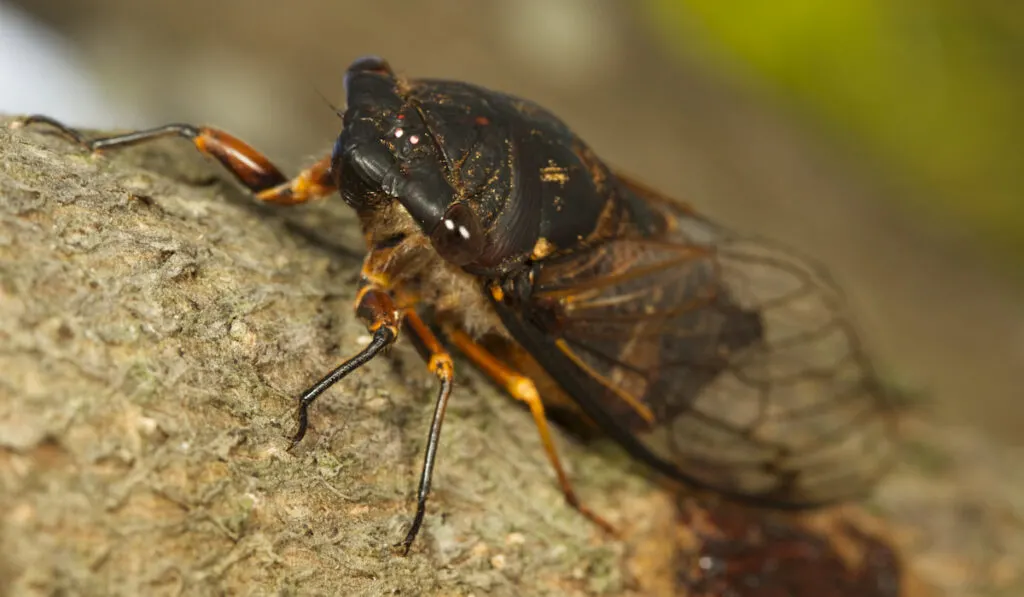
Table of Contents
What are Cicadas?
As a term, “Cicada” refers to insects in the family Cicadoidea. They are in the True Bug order known as Hemipterans.
Cicadas are known for their long and clear (membranous) wings and distinct noise.
Due to the clear nature of their wings and the color of their abdomen, they can be hard to spot since they are naturally camouflaged.
The most popular feature of cicadas, however, is in their lifecycle.
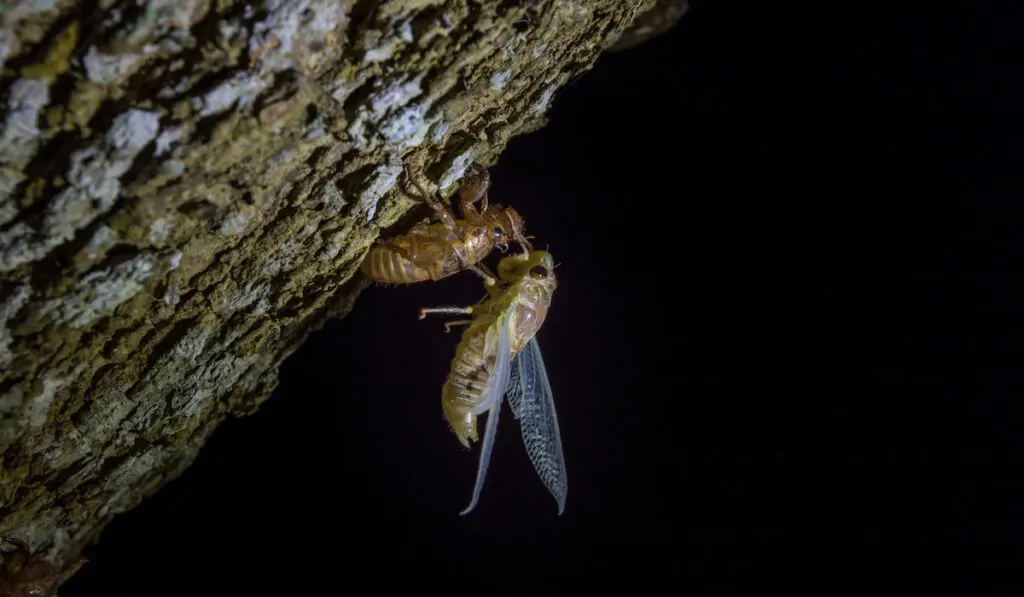
Lifecycle of Cicadas
Cicadas, like most other insects, undergo metamorphosis. The stages in a cicada lifecycle are:
- Egg
- Larvae
- Adult (called imago)
When matured females lay eggs on tree branches, larvae hatch and fall to the ground.
The larvae burrow deep into the soil (nearly 8 feet) for 2-17 years.
When matured, the larvae come to the surface of the soil, molt, and emerge as adults.
Emergence of Cicadas
Cicadas do not just emerge for display. Adult cicadas emerge for reproduction. The longest stage in the lifecycle of cicadas is the larval stage.
After adults emerge and reproduce, they die in just 3-6 weeks.
The eggs laid by females then hatch into larvae, and the larvae fall back into the ground to restart the lifecycle.
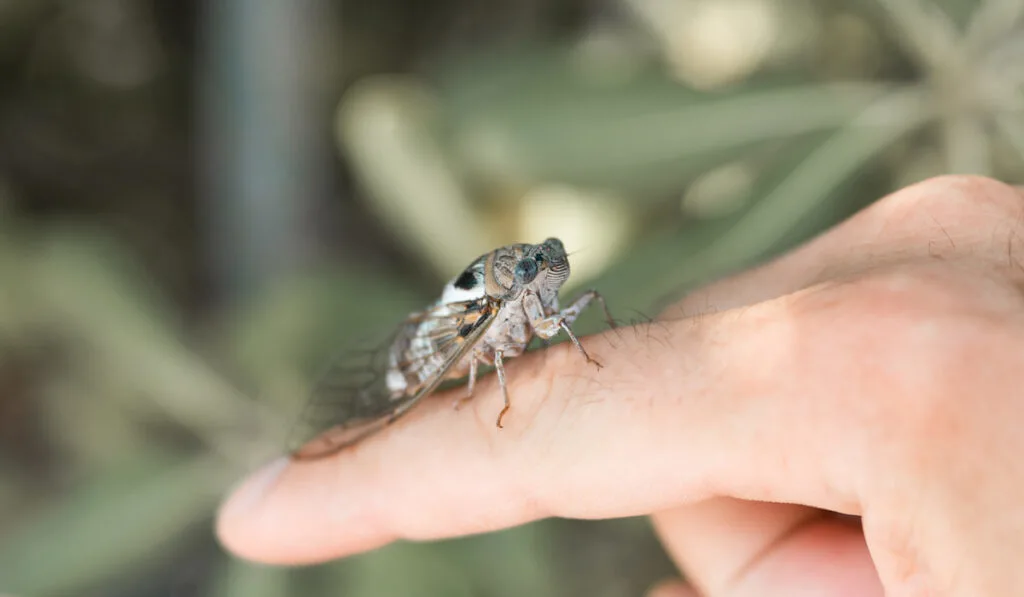
Are Cicadas Dangerous?
Humans and Animals
Cicadas are generally not harmful to animals and humans. This means that you can be near a cicada without getting stung or bitten.
For people with entomophobia (fear of insects), however, cicadas can be of great concern.
According to an expert on phobias, Martin Antony (the author of “Overcoming Animal and Insect Phobias”), the sight of cicadas can cause extreme fear, intense sweating, restlessness, breathlessness, and an urge to flee in people with entomophobia.
People with entomophobia, however, can undergo therapy (which includes a physical examination of cicadas) to cure their phobia for Cicadas. Just remember that Cicadas cannot (and will not) harm you.
Plants
Some insects such as locusts destroy plants by eating the leaves, fruits, and other critical parts of the plant. Cicadas, however, do not have a biting mouth part.
Instead, cicadas suck liquid sap from plants. Depending on quantity, lifecycle stage, and population, cicadas could leave their mark on vegetation.
Here are a few ways cicadas can cause harm to plants:
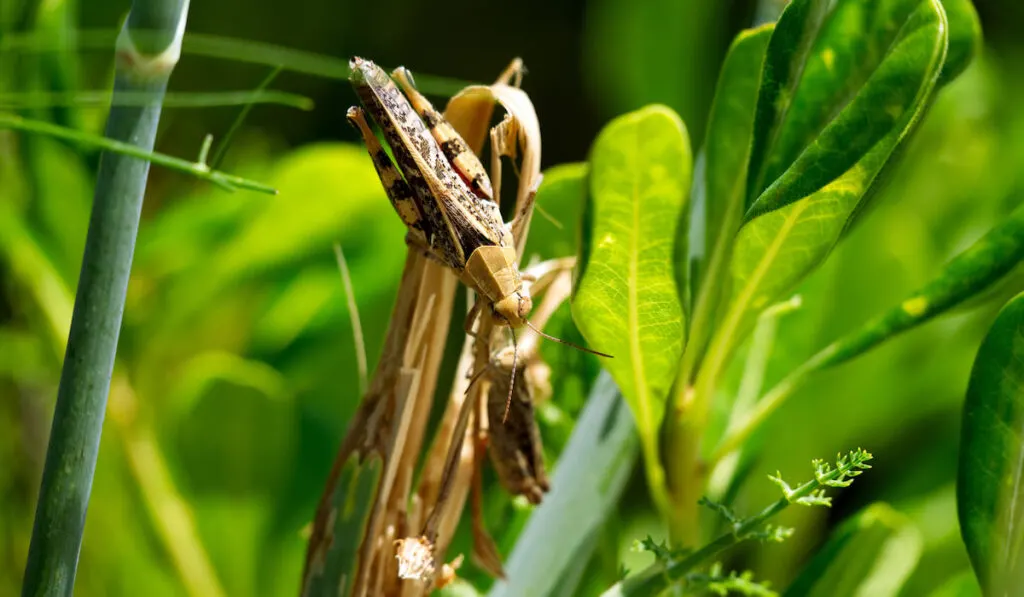
1. Feeding Behavior of Larvae
Remember that cicada larvae are buried deep in the soil. They get nutrition by sucking sap from the xylem of trees around them.
Cicadas do not usually harm healthy trees because trees always produce sufficient sap.
If they feed on weaker or smaller plants, the plant’s health could be affected as the larvae take critical sap with nutrients away from the plant.
2. Feeding Behavior of Adults
It was originally thought that adult cicadas did not eat. However, we have learned that adults will also suck sap from plant leaves, petiole, and stems.
Just like in the larval form, this feeding behavior does not cause a major threat to healthy trees.
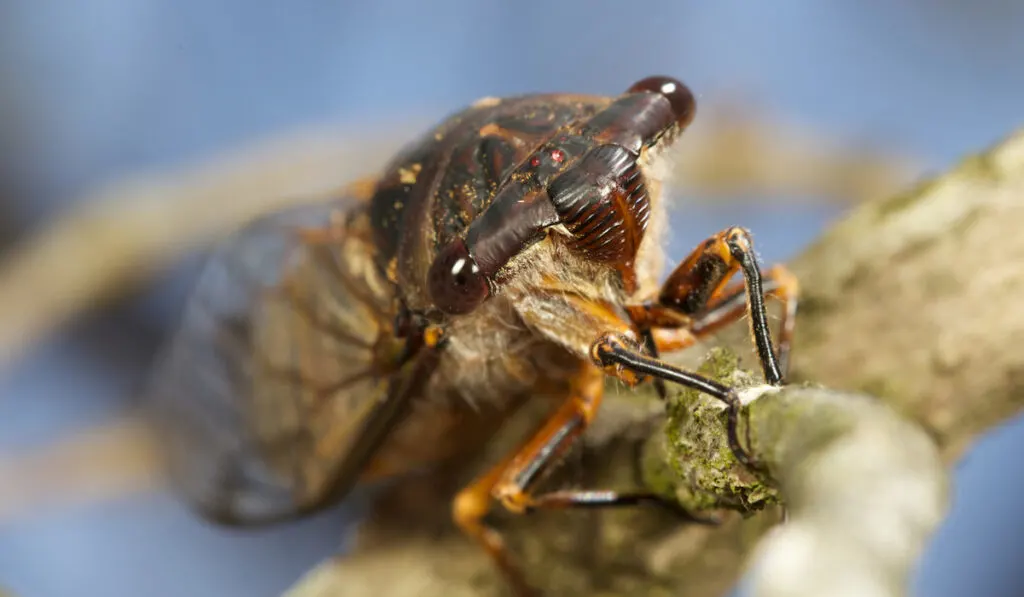
3. Egg-Laying Behaviors of Females
This behavior of cicadas causes more damage to plants when compared with other behaviors.
When cicada females are ready to lay eggs, they cause splits on tree branches and lay their eggs in the new groove.
These grooves can lead to branches splitting in two or withering. They can also lead to the stunted growth or death of the plant.
4. High Population in a Specific Location
Depending on how many adults lay large quantities of eggs at similar times, the number of new cicadas that come to the surface together can be overwhelming.
Up to 1.5 million adult cicadas can be seen flying in a single location. The feeding and laying behaviors of these insects have great negative impacts on grapevines, orchards, and fruit trees.
The emergence of cicadas is an interesting sight to behold, but it is not so fun for fruit tree growers.
These insects will feed in large groups on trees that produce large amounts of sap.
Asides from sucking the sap of plants and splitting branches, cicadas do not harm plants in other ways.
Other Facts About Cicadas
1. Cicadas Have Benefits
Did you know that cicadas have a few benefits?
- Food for Other Animals: When cicadas emerge, they make a great meal for birds, wasps, squirrels, and bats.
- Protein Source for Animal Feed: Adult cicadas that have reproduced are a sustainable source of protein, calcium, and other nutrients to make feed for animals such as fish and pigs.
- Cultural Value: In many cultures (especially in Asia), the emergence of cicadas signifies rebirth, so these insects are highly valued.
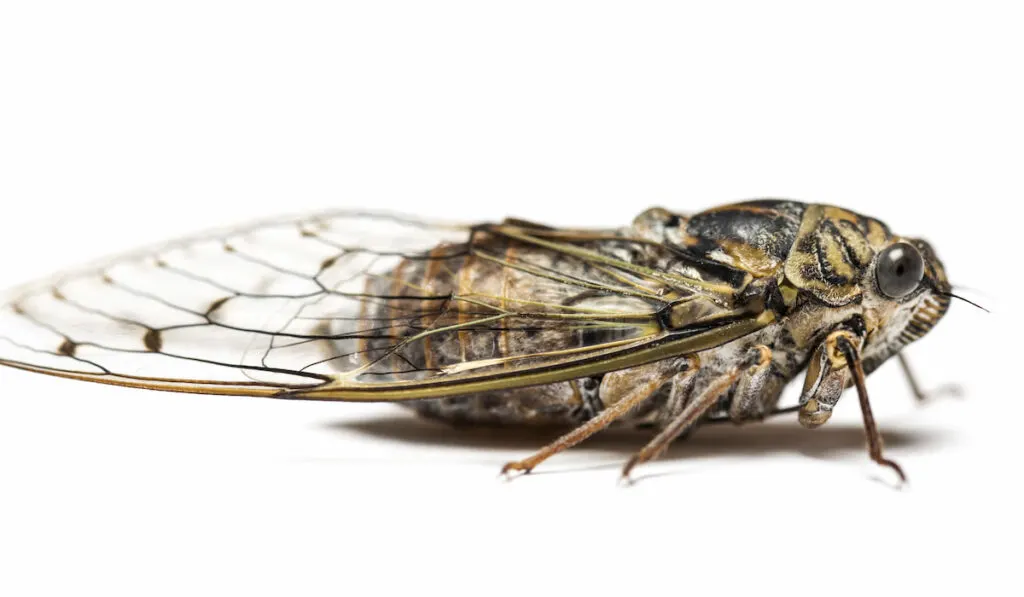
2. There Are Over Three Thousand Species of Cicadas
You can find more than 3,000 different cicada species. These species, though many, as classified as either Annual or Periodic species.
Annual cicada species emerge every year while periodic cicada species emerge after many years (13-17 years).
3. Not All Cicadas Call Their Mates With Sound
The Hairy Cicada (Tettigarctidae) does not call their mates with a sound. Instead, this species vibrates the substrate, such as a leaf or branch, to attract nearby mates.
Final Thoughts
Get ready to witness the emergence of cicadas in 2021 after 17 years. You can look at them closely because they will not harm you. If you have fruit trees, however, you should protect them.
Sources
- https://api.nationalgeographic.com/distribution/public/amp/animals/invertebrates/group/cicadas
- https://www.housebeautiful.com/lifestyle/a32629004/cicadas-return-facts/
- https://abcnews.go.com/US/millions-cicadas-emerge-parts-us-1st-time-17/
- https://www.nytimes.com/2013/06/04/science/rise-of-the-cicadas-paralyzes-those-with-insect-phobia.html
